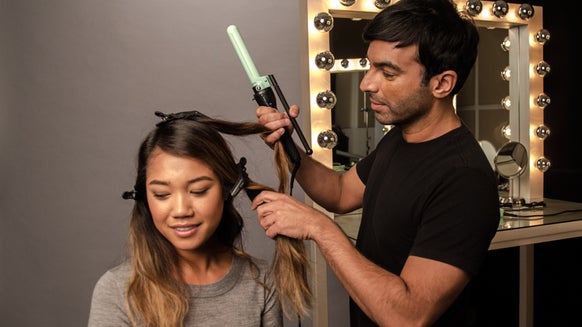What Is an Esthetician? Plus, How to Make the Most of Your First Visit
Every once in a while it’s important to take time for yourself. Pampering yourself with a facial or skin-rejuvenating treatment can help you do just that. If you find yourself wanting to treat yourself to a spa day, you'll likely be in the hands of a skin care professional known as an esthetician. Thanks to certified esthetician Christine Walsh, we're able to provide you with the 411 on these specialists—from their qualifications to where they work and the services they provide.
What is an esthetician?
An esthetician is a professional skin specialist, trained to assess and enhance the skin through various treatments and services.
During their training, estheticians learn about how to care for and improve the skin through a comprehensive course load. According to EstheticianEDU, classes typically cover the following topics: reflexology, cosmetic sciences, human anatomy and physiology, safety and sanitation, hair removal, skin conditions and disorders and more.
Where are you likely to find an esthetician working?
Depending on their interests and preferred services, estheticians may be found in "salons and beauty spas, day spas, nail salons, fitness studios/gyms and beauty supply stores," says Christine. Additionally, some estheticians work under the supervision of dermatologists or cosmetic surgeons, offering services in a medical setting.
What types of services does an esthetician offer?
Each salon or medical facility is different and each offers a variety of different services. Christine notes that the services offered by an esthetician in a salon or spa vary and depend on the certification that the esthetician holds. Costs of services may vary based on location and certification as well. Some of the most common services, listed with average pricing, include:
- European facial - $80
The most commonly requested facial, this treatment includes cleansing, exfoliation, extraction, steam and massage.
- Customized facials - $50–165
Created to address your specific skin concerns, these may consist of active ingredients, serums, masques, toners, moisturizers and other treatments.
Microdermabrasion - $50
Uses a combination of exfoliation and suction to remove dead skin cells and promote cell turnover for healthy, younger-looking skin.
- Chemical peels - $50–100
Designed to target skin concerns like hyperpigmentation, collagen loss and dehydration, chemical peels help resurface your skin for a healthy glow.
- Deep extractions - $15
In-depth pore extractions, ideal for de-clogging problematic or acne-prone skin.
Eyelash extensions - $125–175
Long-lasting false eyelashes that are individually applied to each of your existing lashes.
- Makeup application - $35–55+
Customized makeup application by a trained professional for special occasions.
- Eye treatments - $25
Anti-aging, fatigue-fighting eye treatments for brighter, tighter and well-rested eyes.
Face/body waxing - $10–100
Removes hair from desired body parts; costs vary based on what you want waxed.
How is an esthetician different from a dermatologist?
Both are trained, licensed skin specialists, and you might go visit each of them for similar reasons and skin concerns. However, a dermatologist is a medical doctor, trained in the diagnosis, treatment and prevention of skin-related diseases. Estheticians are limited to services that don't puncture the skin's surface. Dermatologists, on the other hand, may prescribe medication and treat skin concerns through surgery or cosmetic procedures (each of these requires a state-issued medical license).
How can you make the most of your first visit?
- Check out the reviews of the spa or check out before-and-after pictures of a treatment you’re considering.
- Choose a service based on your specific skin concerns. If you are unsure of what will give you the results you want, your esthetician will be more than happy to answer questions and help you decide on a treatment.
- Before your appointment, don’t be afraid to ask lots of questions—whether over the phone or in person during a consultation.
- Do your best to relax during your appointment; your comfort is top priority.
- Feel free to ask as many questions as you need before, during and after your visit.
- Make your esthetician aware of any allergies or skin sensitivities before your appointment.
- After choosing a service, you may want to ask when you'll see results, how long the results will last and what at-home or after-care regimen you may need to follow.
As an alternative to visiting an esthetician or to pamper yourself in between services, take a look at some of the spa-worthy product recommendations below.

From the latest hair and makeup trends to the best solutions for your skin issues, we've got all your beauty concerns covered!







